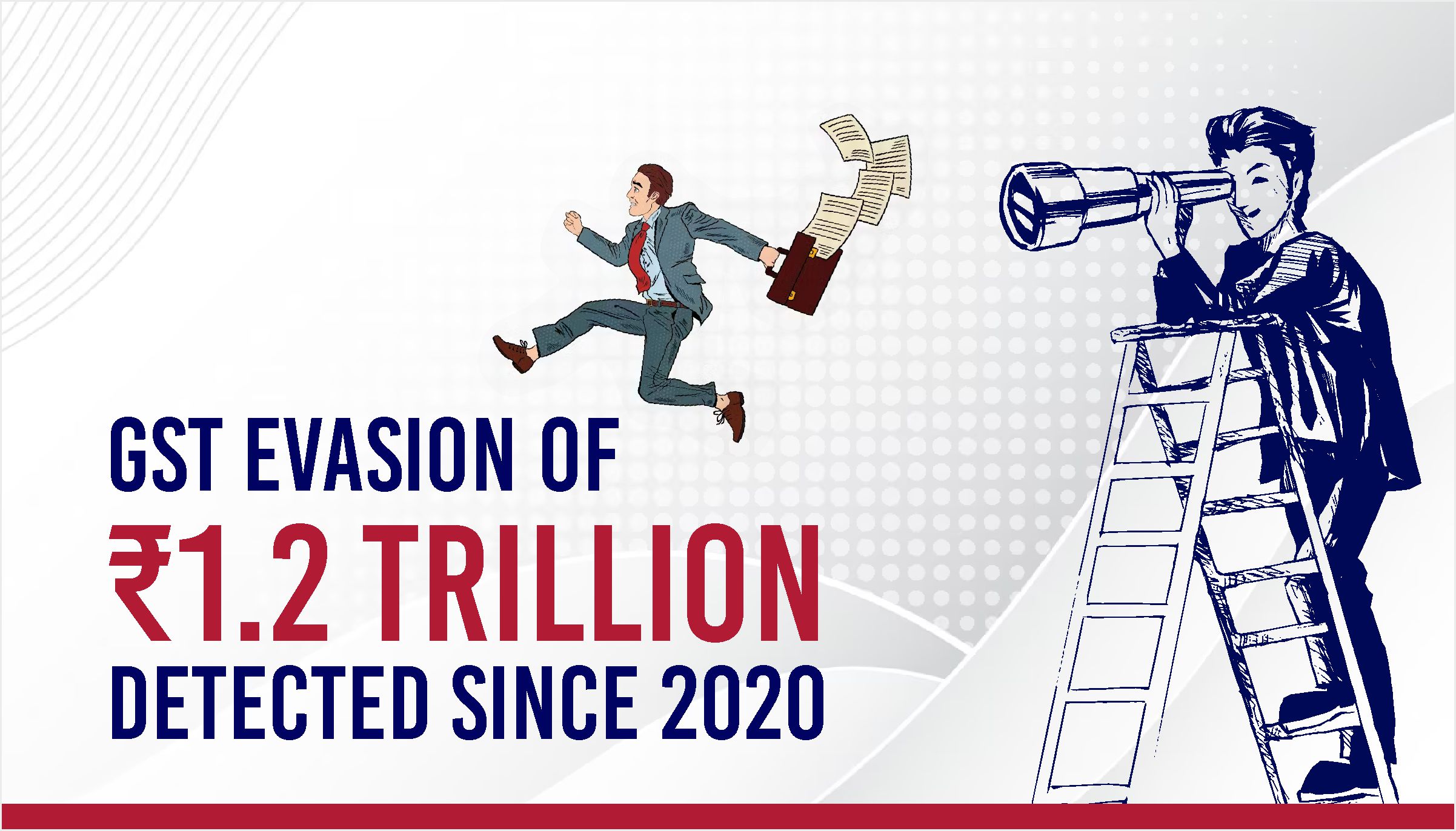Tax Evasion of Rs 1.2 Trillion Detected by GST Intelligence Since 2020

The Goods and Services Tax (GST) regime, introduced in India with the aim of unifying and simplifying the tax structure, has faced significant challenges in combating tax evasion. The most prominent among these challenges is the misuse of Input Tax Credit (ITC) through fake invoices and fraudulent firms. Since 2020, the Directorate General of GST Intelligence (DGGI) has detected tax evasion amounting to a staggering Rs 1.2 trillion, a figure that highlights the scale of the problem. In response, both Central and State authorities have launched an aggressive nationwide drive to weed out fake firms and crack down on tax evasion practices.
Methods of Tax Evasion in GST
Tax evasion under GST primarily occurs through several sophisticated methods, each designed to exploit the system for unlawful gain. Some of the most common techniques include:
Fake Invoicing and ITC Fraud:
Fake invoices are generated without actual supply of goods or services, allowing fraudulent businesses to claim ITC, which they then sell to other entities. This not only reduces the tax liability of the purchasing company but also creates a cascading effect that damages the entire tax system.
Circular Trading:
Circular trading involves multiple companies creating a loop of transactions involving fake invoices. This results in inflating turnover and claiming ITC, all without any actual movement of goods or services. This practice not only facilitates tax evasion but also complicates tax audits.
Underreporting of Sales:
Some businesses underreport their actual sales to reduce their GST liability. By showing lower sales figures, they can pay less tax than what is legitimately due, leading to a significant loss of revenue for the government.
Misclassification of Goods and Services:
By deliberately misclassifying goods and services under categories with lower GST rates, businesses can evade higher tax rates. This manipulation often requires in-depth scrutiny to detect, adding to the challenges faced by tax authorities.
Shell Companies and Bogus Firms:
The creation of shell companies or bogus firms is another prevalent method of tax evasion. These entities are registered for the sole purpose of issuing fake invoices and claiming fraudulent ITC. They do not engage in any genuine business activities, making them difficult to trace.
The Menace of Fake Input Tax Credit (ITC)
Fake ITC has emerged as a particularly pernicious issue within the GST framework. The misuse of ITC through fake invoices not only deprives the government of revenue but also undermines the credibility of the GST system. The detection of Rs 1.2 trillion in tax evasion since 2020 is largely attributed to this practice, highlighting its pervasive nature.
The DGGI has been actively identifying and targeting syndicates involved in ITC fraud. These syndicates often operate across multiple states, making enforcement complex and resource-intensive. The involvement of 59,000 potential fake firms in such activities, as identified by GST intelligence, reveals the extensive network that needs to be dismantled.
The All-India Drive Against Fake Firms
In a bid to curb these malpractices, the Central and State authorities launched a special two-month nationwide drive on August 16, 2024. The primary objective of this initiative is to detect suspicious and fake GST Identification Numbers (GSTINs), verify their authenticity, and take appropriate remedial action.
This drive represents a coordinated effort to cleanse the GST ecosystem by eliminating entities that misuse the system for fraudulent gains. By focusing on weeding out fake billers, the government aims to safeguard revenue and restore faith in the GST framework.
During this drive, the GST intelligence department has made significant strides, including the apprehension of 170 individuals involved in tax fraud. These efforts are expected to disrupt the operations of syndicates and act as a deterrent against future tax evasion attempts.
Notices Issued for GST Evasion
As part of the crackdown on tax evasion, the DGGI has issued over 20,000 notices across India for the assessment years 2017-18 to 2021-22. These notices pertain to various issues, including shortfalls in tax payments, reversal of ITC, and misinterpretation of legal provisions. The total tax demand from these notices amounts to over Rs 80,000 crore.
The timing of these notices is critical, especially for cases from AY 2017-18, where the limitation period for issuing notices was approaching. By ensuring that these notices were sent out before the August 5, 2024 deadline, the DGGI has positioned itself to finalize orders by February 5, 2025.
The Central Board of Indirect Taxes and Customs (CBIC) has advised enforcement units to concentrate on genuine cases of evasion rather than interpretative issues or common industry practices. This strategic focus is expected to enhance the effectiveness of the enforcement actions and minimize unnecessary litigation.
The ongoing battle against tax evasion under GST is both challenging and critical for the health of India’s tax system. With the detection of massive tax evasion through fake ITC and the launch of a nationwide drive to root out fraudulent firms, the authorities are taking decisive steps to protect government revenue and ensure the integrity of the GST regime. The issuance of over 20,000 notices for past assessment years further demonstrates the government’s commitment to addressing this issue comprehensively.
As the fight against tax evasion continues, it is imperative for businesses to comply with GST regulations and contribute to the nation’s economic growth by paying their fair share of taxes. The robust enforcement measures in place serve as a reminder that tax evasion, in any form, should not be tolerated.
